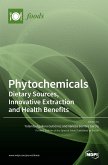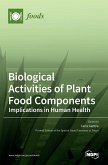This Reprint represents a collection of 12 scientific papers belonging to the Special Issue in Antioxidants titled "Advances in the Astonishing World of Phytochemicals: State-of-the-Art for Antioxidants-2nd Edition" edited by us. Several studies have shown that plants are a source of a plethora of bioactive compounds, such as phytohormones, glycosides, terpenoids, alkaloids, phenolic compounds, and essential oils, with a strong potential impact in the fields of pharmaceutics and agriculture. These phytochemicals represent a valuable set of weapons that plants use in self-defense to counteract abiotic stresses disturbing the delicate equilibrium between the generation of reactive oxygen species (ROS) and antioxidant defense systems. In recent years, the interest in this area of research has been increasing due to the multifaceted properties of natural compounds containing antioxidants and exhibiting anticancer, anti-inflammatory, and antimicrobial activity. Therefore, understanding the underlying mechanism of their action is crucial to establishing their real potential in applied sciences and their potential health benefits. This reprint is addressed to researchers exploring the multifaceted properties of natural compounds containing antioxidants, and describes the need to understand how active compounds, solvents, and complex formations interact, in order to better establish their potential in applied sciences. We are grateful to all the authors for their contributions to the research topic of this reprint and all the editorial staff members for their valuable support.
Bitte wählen Sie Ihr Anliegen aus.
Rechnungen
Retourenschein anfordern
Bestellstatus
Storno








